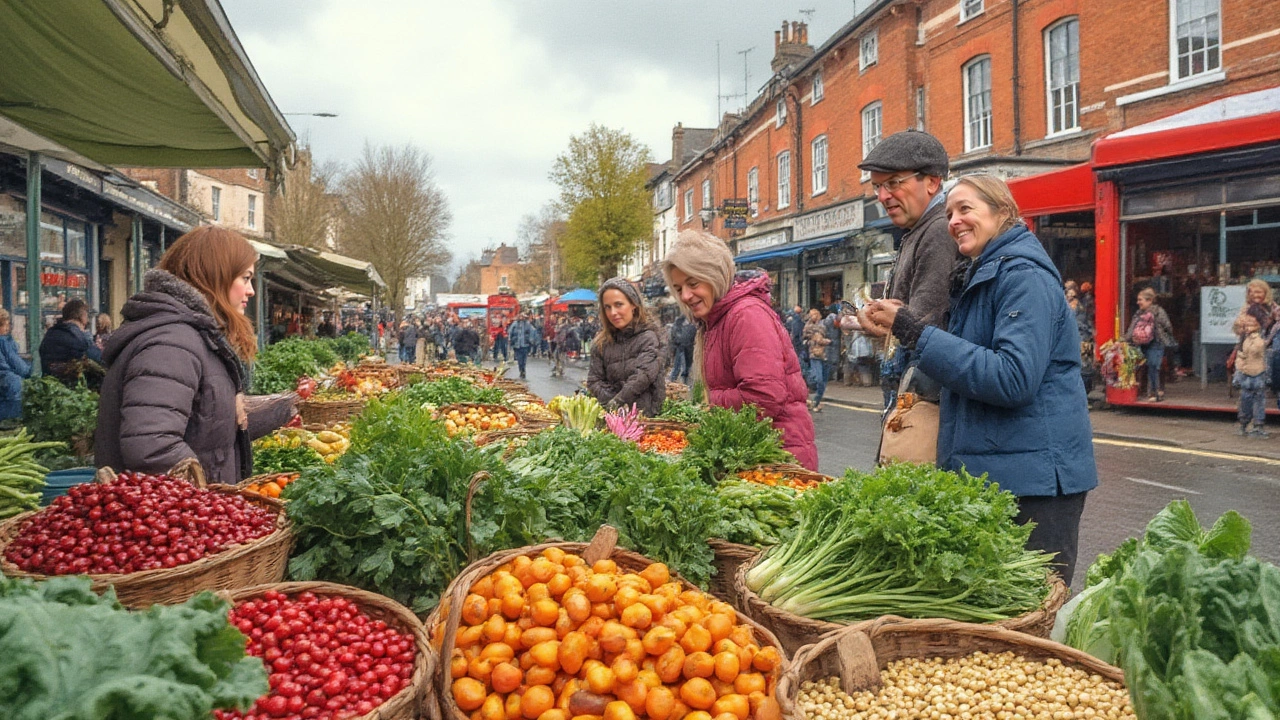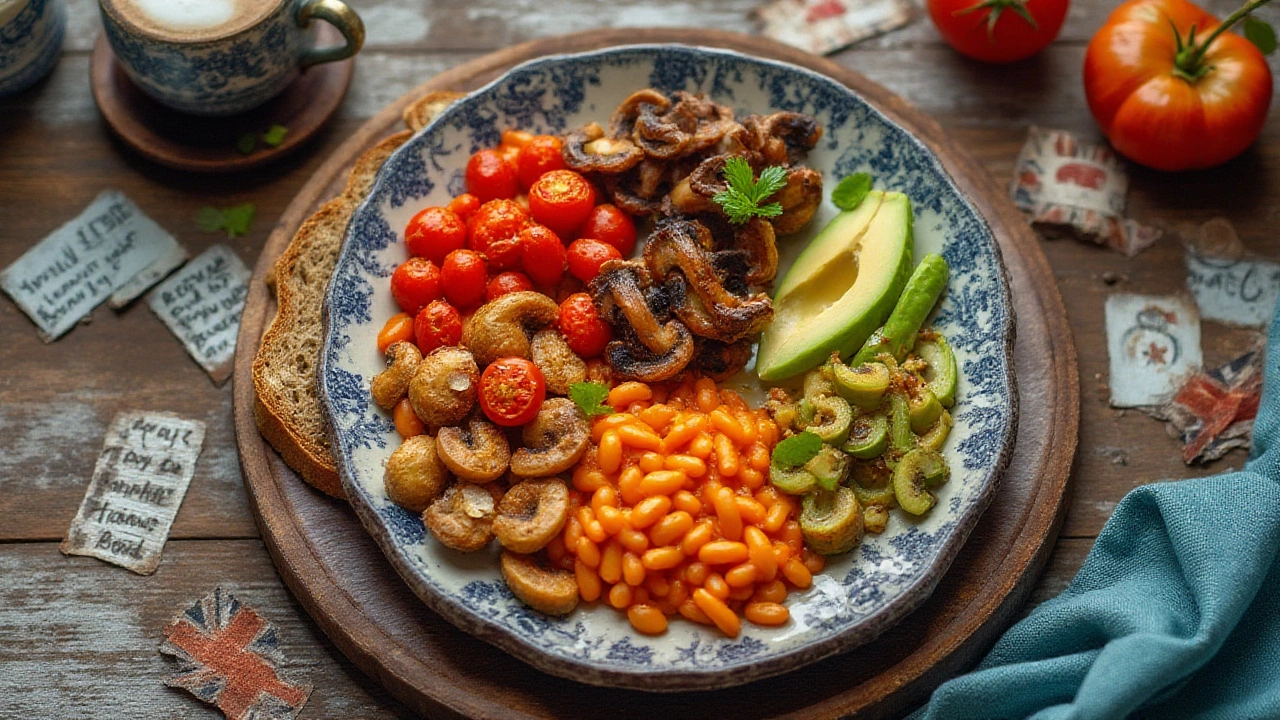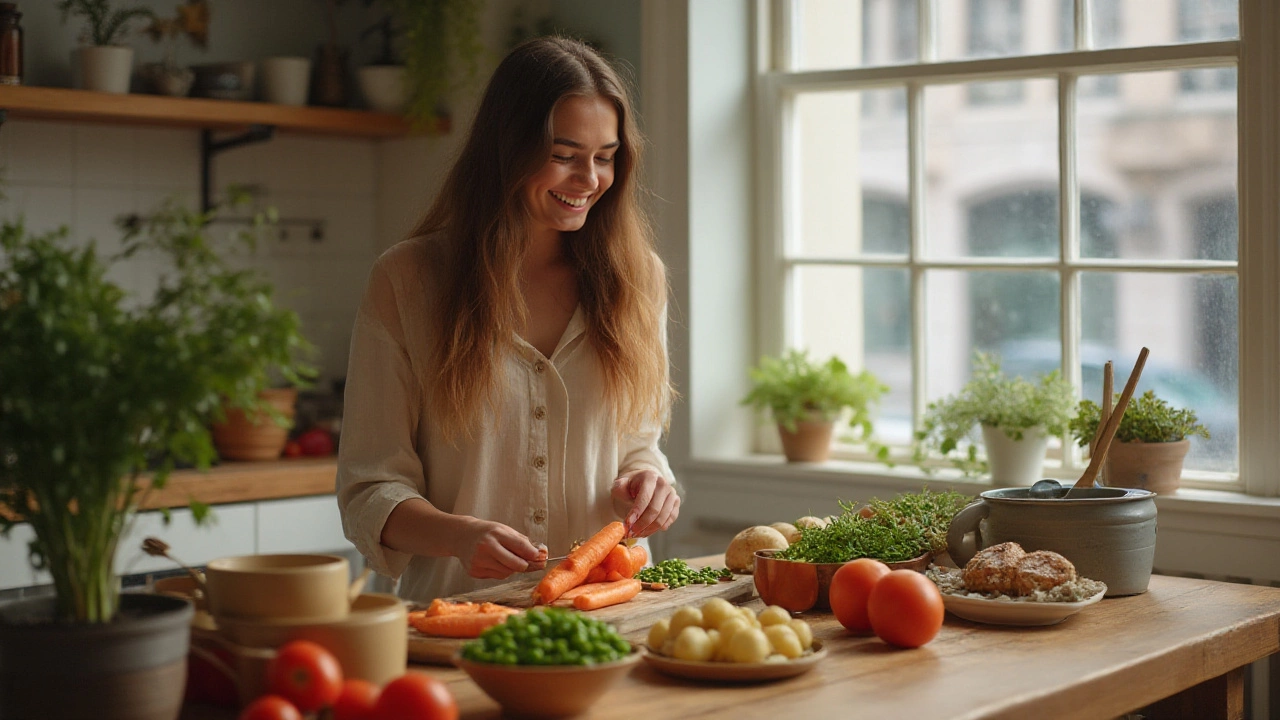Ask anyone their idea of the most stripped-back vegan diet, and you’ll probably hear jokes about eating carrots for every meal. Here’s the thing: a basic vegan diet is way more than a rabbit’s lunch, but it can be shockingly straightforward. No fake meats, no obscure ingredients, just real food—plants and nothing else. Some of the world’s healthiest and most resilient communities get by eating only the essentials. Turns out, you don’t need fancy superfoods or complicated recipes to run a vegan kitchen. All you really need are a few core ingredients, a pinch of curiosity, and the will to keep things clean and uncomplicated.
What Makes Up the Most Basic Vegan Diet?
The heart of any vegan diet lies in this one rule: nothing from animals. That means no meat, no fish, no dairy, no eggs, and absolutely no honey. The most barebones version? Think grains, beans, fruits, vegetables, nuts, and seeds—stuff your grandparents’ grandparents would instantly recognize. Most beginner vegans kick things off with rice, beans, potatoes, oats, bananas, apples, carrots, broccoli, spinach, lentils, and peanut butter. That’s the backbone. These foods are cheap, everywhere, and take care of calories, protein, and fiber. Here’s the cool part: with just those basics, you can whip up dozens of meals—chili, soups, stir-fries, even a decent banana pancake if you get creative.
This approach goes by a few names—sometimes "whole food plant-based," sometimes just "vegan on a budget." But at the most basic, we’re talking about meals like oatmeal with sliced fruit for breakfast, rice and beans for lunch, and maybe roasted potatoes with sautéed veggies for dinner. Snack? Grab a handful of nuts, or maybe a crisp apple. No labels to read, no ingredient lists the length of your arm. Just real, whole foods.
Not everyone feels satisfied with such a basic setup, and that’s fine. But if you asked the nutritionists who study ancient diets or the staple meals of resourceful cultures, you’ll notice a trend: simple food combos, repeated often, with minor tweaks for flavor. Blue Zones—places where people regularly live over 100 years—famous for eating largely plant-based staples. Okinawans leaned on sweet potatoes, legumes, and grains. Costa Ricans stuck with black beans, squash, corn, and tropical fruits. And guess what? Their medical charts glow compared to those in most Western countries. So yes, a basic vegan diet isn’t just survival food—it’s slow-burn fuel for long, healthy living.
People often worry about protein, but that fear falls apart if you look at the numbers. A cup of cooked lentils carries about 18 grams of protein, more than three eggs. Rice and beans together form a "complete" protein. Peanut butter—another old-school staple—packs in healthy fats and protein, too. You won’t find B12 or vitamin D naturally in these staples, so those might need a supplement or fortified food. But for iron, magnesium, potassium, and fiber? The basics have it covered.
Unprocessed plant foods are naturally low in salt, cholesterol, and added sugars. They also tend to fill you up without inflating your waistline, thanks to the fiber. And as you go more basic, you tend to eat less junk out of boxes or restaurants—since, let’s face it, a bag of dry beans is hard to turn into a processed nightmare. People switching to this kind of diet often report more energy and easier digestion—sometimes within a week or two.
One thing that’s often missed: the beauty of learning to enjoy real flavors. When you eat basic—like a ripe banana, roasted potato, or a spoonful of peanut butter—you start tasting sweetness and earthiness that can honestly get drowned out by factory foods. If you stick with it for a few weeks, bland becomes complex, and you might find yourself craving a crisp apple over an ultra-sweet granola bar.
The key to success? Choose foods you already like, and cook them in familiar ways. Like potatoes? Try them baked, mashed, or sliced up and tossed with a little olive oil and herbs. Love beans? Cook a big pot of them with onions, garlic, and whatever seasonings you already enjoy. Keep it simple, and let the flavors do their magic. When you build meals around simple, whole ingredients, your shopping list shrinks, your wallet stays happy, and cooking becomes almost meditative.

How to Build Simple Vegan Meals from Scratch
Getting started can feel weird if you’re used to eating meat or cheese at every meal. The trick is swapping out your usual proteins and fats with plant-based versions, but doing it in a way that doesn’t feel like punishment. Instead of thinking about what you’re not eating, start with the basics you already have. Open your pantry: got rice? Beans? Lentils? A few potatoes? That’s a week’s worth of main courses right there.
Start your day off with oatmeal or whole grain toast topped with peanut butter and banana. If you want something savory, try sautéed greens and beans on toast. Lunch can be a burrito with black beans, brown rice, salsa, and roasted vegetables. Or you could go old-school and have a big bowl of lentil soup—one of the most filling, cheapest, and healthiest lunches out there. Dinner? Roasted potatoes, steamed broccoli, and a big serving of chickpeas tossed with a squeeze of lemon and a dash of salt. The best part: this isn’t just a survival diet. It’s genuinely good, and you’re not going to feel hungry an hour later.
Here are a few tips to help you build meals that are both basic and flavorful:
- Batch cook for the week: Make a huge pot of brown rice or quinoa and a big pot of beans or lentils on Sunday. Then, all week, scoop out what you need for burritos, stir-fries, salads, or grain bowls. It makes meal planning easy, and you always have something ready in the fridge.
- Keep cheap, versatile veggies handy: Think carrots, celery, onions, sweet potatoes, and leafy greens. They work in almost any meal, raw or cooked.
- Use spices and herbs: Even the simplest bowl of rice and beans can taste amazing with a dash of smoked paprika, cumin, or maybe some oregano and basil. Lemon juice and vinegar are your friends, too—they perk things up when you want fresh flavor without effort or calories.
- Snack smart: Apples, bananas, oranges, and walnuts are super easy, portable snacks. They don’t spoil fast, and they don’t need a recipe.
- Simple sauces: Whisk together a bit of tahini, lemon, and water for a quick, creamy drizzle over your veggies and grains.
- Be kind when you mess up: Everyone burns beans sometimes or overcooks veggies. It’s part of the learning curve, not a reason to quit.
You don’t need to buy vegan specialty foods to make this work. Skip the packaged “meats” and vegan cheese when you’re just starting out. Use what you’ve got, especially when you’re learning the ropes. Later, you can play with those products if you want, but they’re not necessary for a satisfying vegan plate. If you get bored, try a new bean or swap white potatoes for sweet potatoes. See what happens when you add a handful of frozen spinach into your soup, or mash chickpeas onto toast with a little sea salt and a squeeze of lemon.
Keep your kitchen stocked with the basics. Need a checklist? Start with these:
- Whole grains: Brown rice, oats, quinoa, barley, and whole wheat bread or pasta.
- Legumes: Lentils, black beans, kidney beans, chickpeas, split peas.
- Starchy vegetables: Potatoes, sweet potatoes, squash, corn.
- Non-starchy vegetables: Broccoli, carrots, leafy greens, peppers.
- Fruits: Bananas, apples, oranges, berries, anything in season.
- Nuts and seeds: Almonds, peanuts, sunflower seeds, chia or flax seeds.
If you’re hungry after a meal, increase the portions, or add another fruit or handful of nuts next time. There’s no “perfect” balance—your body will tell you what’s missing if you pay attention. If you feel tired or low on energy for a few days, try adding an extra serving of whole grains or a drizzle of olive oil. Honing your sense of what feels good comes with a little trial and error.
Remember, this isn’t a fad or a cleanse. The basic vegan diet doesn’t require willpower—it just asks you to eat real food, skip the animal products, and keep meals unfussy. Most people who stick to this style end up spending way less on groceries, make fewer trips to the store, and spend less time cooking than they expect.

What Can You Expect When Switching to a Basic Vegan Diet?
Changing your eating habits isn’t just about food—it can shift everything from how you shop to how you feel during the day. On a basic vegan diet, a few things stand out right away. Grocery trips feel almost too easy. No more drifting down the frozen meat aisle or reading endless packages. Instead, you’re grabbing rice, beans, potatoes, oatmeal, a rainbow of veggies, and fruit, then getting out the door. The time you save on planning and prepping? That’s time you can spend doing whatever you actually enjoy.
Your digestion will likely change—sometimes for the better, and sometimes you might need an adjustment period. Beans and whole grains are full of fiber, which can ramp up stomach activity if you’re used to eating less. Drinking more water and moving a bit (just walking helps) clears the system right up. Within a week or two, most people say they feel lighter and have steadier energy without the post-meal crash. Fiber isn’t some magic bullet, but it does keep you full longer and makes the bathroom experience a lot more predictable.
Here’s a lesser-known tip: If you’re switching fast and find beans hard to digest, try canned versions or make sure you soak and rinse dry beans really well before cooking. That gets rid of some of the stuff that causes, well, flare-ups. Over time, your body adapts. And if meals start tasting bland, that’s why seasoning exists. Acidic flavors (lemon, tomato, vinegar) make basic foods brighter. Toss on a dash of smoked paprika or sriracha, and watch flavor levels jump.
It’s normal for friends or family to ask a million questions. If they’re curious, invite them over for a big pot of chili or a classic lentil soup. Show them it’s not all salads and celery sticks. People love food that’s hearty and filling, and basic vegan meals hit that mark, especially on a cool night after work.
As for downsides, be realistic about what nutrients need extra attention. B12 is a must—no modern vegan gets enough from food alone. Grab a good-quality supplement. Vitamin D can be low if you live far from the equator or avoid sunshine, so look for fortified plant milk or consider a supplement. Iron and omega-3s sound like big worries, but basic foods like lentils, spinach, and walnuts cover a chunk of those needs. If you’re feeling wiped out, get a blood test and talk to someone who knows plant-based nutrition, not just Dr. Google.
A cool historical tidbit: most cultures that ate mostly plants didn’t worry about labels or exact nutrients—they just ate what grew well locally. People thrived on beans, grains, and seasonal veggies around the globe for centuries before vitamin charts were invented. Try to keep that in mind if you ever get bogged down reading ingredient lists or diet books. The most basic vegan diet isn’t new—it’s ancient, tried and true.
If you’re hunting for recipes, don’t overthink it. Favorite comfort foods often have plant-based versions running back generations. Potato soup, bean stew, veggie curry, tomato pasta—look at what your family cooked before fancy packaged foods took over. Sometimes, all a dish needs is for you to skip the meat or butter; other times, adding a handful of beans or lentils finishes the job. The internet’s overflowing with basic vegan recipes, but you can build a tasty bowl in five minutes with nothing but leftovers and the right spice.
Last tip: stay patient. Taste buds can take a few weeks to adapt if you’re dropping processed foods and meat. But once they do, the sweetness of a ripe peach or the richness of hummus on toast feels like a reward. Choosing simplicity isn’t settling—it’s rediscovering what real food tastes like, one bite at a time.

